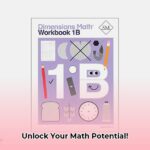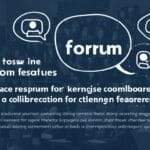Teaching is an art form, requiring skillful execution and precise techniques. The InTASC Standards serve as a roadmap for educators, guiding them toward becoming the best they can be. They offer a framework for reaching students effectively, assessing their learning, and fostering collaborative classroom environments. This guide breaks down the InTASC Standards into digestible segments, exploring how they can empower you to become a truly exceptional teacher.
Exploring the InTASC Standards
The InTASC Standards represent a gold standard, a guidebook for effective teaching, encompassing ten key principles designed to support educators at all levels, from kindergarten through high school, across all subjects. These standards are more than a checklist; they capture the essence of impactful teaching. Implemented nationwide, they shape teacher training, performance evaluations, ongoing professional development, and the continuous improvement of education for all. The Council of Chief State School Officers (CCSSO), a collective of state education leaders, developed and maintains these standards, which many states have adopted to inform their own educator frameworks.
Decoding Each InTASC Standard
Let’s delve into each of the ten InTASC Standards, providing a clear explanation accessible to seasoned teachers, new educators, and anyone interested in education:
Learner Development: This standard centers on understanding how children and adolescents grow and learn, encompassing both physical and cognitive development. It acknowledges each student’s unique learning pace and style. Teachers who embrace this standard continually adapt their methods to meet the individual needs of every student, constantly seeking insights into optimal learning approaches.
Learning Differences: Building upon the individuality of learners, this standard emphasizes creating inclusive classrooms where all students feel welcome and supported, regardless of background, abilities, or challenges. It encourages appreciation for diversity as a classroom strength, ensuring every student has the opportunity to succeed.
Learning Environments: This standard envisions classrooms as dynamic spaces that go beyond rote learning, fostering a sense of safety, support, and inspiration. It promotes positive and productive learning atmospheres where students feel comfortable taking risks, asking questions, and collaborating.
Content Knowledge: This standard underscores the importance of profound content knowledge, extending beyond factual recall to encompass a deep understanding of underlying concepts and their connections to other learning areas. It emphasizes clear and accessible explanations.
Instructional Practices: Recognizing that teaching requires a diverse toolkit, this standard encourages using a wide array of strategies – project-based learning, collaborative work, hands-on activities, and more – to cater to different learning styles and facilitate student achievement.
Assessment: Assessment, according to this standard, isn’t just about grades; it’s about understanding each student’s learning journey. It highlights using various assessment types (not just tests) to track progress and provide meaningful feedback that fuels growth, guiding instruction and supporting learning.
Professional Responsibility: This standard addresses ethics and the importance of being a role model. It emphasizes maintaining high professional standards, acting with integrity, and demonstrating a commitment to student well-being.
Collaboration and Communication: Teaching is a collaborative endeavor. This standard encourages teamwork with other teachers, parents, and community members to create a robust support system for students, fostering open communication and positive relationships.
Professional Growth: Lifelong learning is essential for exceptional teachers. This standard promotes continuous professional development and reflective practice to identify areas for improvement, driving a constant pursuit of excellence.
Leadership: Teachers can be leaders both within and beyond the classroom. This standard empowers teachers to assume leadership roles in their schools and communities, advocating for enhancements in teaching and learning.
The InTASC Standards are not merely minimum requirements; they inspire educators to fulfill their potential, fostering student-centered, ethically grounded, and continuously improving teaching practices. These standards empower teachers to create dynamic and inclusive learning environments where every student can thrive.
Beyond these standards, the CCSSO developed the InTASC Learning Progressions, a roadmap for teacher development outlining key milestones and progress indicators throughout a teacher’s career. Aligning professional learning with these progressions allows teachers to focus on areas needing growth, ensuring they are equipped to meet the evolving needs of their students and the ever-changing educational landscape. Ongoing research continually refines our understanding of learning, and embracing the InTASC Standards and Learning Progressions empowers educators to unlock their potential and contribute to a future where every student can flourish. Embark on your journey to academic excellence by delving into our comprehensive HSPT practice test PDF and discover the key principles that guide IB learner profile traits for a transformative educational experience.
Deciphering the InTASC Standards
Let’s explore the InTASC Standards in greater detail. The acronym stands for the Interstate Teacher Assessment and Support Consortium. It represents a shared vision for effective teaching, envisioning educators across state lines working toward a common goal: providing exceptional learning experiences. InTASC provides the guideposts, a common language, and a set of expectations for teacher training, licensing, and ongoing professional growth. It functions as a blueprint for developing effective educators.
These standards are active documents, outlining essential skills and knowledge for impactful teaching. They encompass various aspects, from understanding student growth and development to adapting lessons for diverse learners and upholding high ethical standards. While some may perceive standards as rigid, the InTASC standards are designed for flexibility and adaptability, providing a solid foundation while allowing for individual creativity and innovation.
Here’s a glimpse into the core areas covered by the InTASC standards:
| Standard Area | Description |
|---|---|
| Learner Development | Understanding student growth and development – physical, social, emotional, and intellectual. |
| Learning Differences | Recognizing and adapting to the unique learning needs of all students, including those with disabilities. |
| Learning Environments | Creating positive, supportive, and engaging learning spaces that foster collaboration and critical thinking. |
| Content Knowledge | Deep understanding of subject matter and staying current with research and best practices. |
| Application of Content | Effectively conveying knowledge to students in relevant, engaging, and accessible ways. |
| Assessment | Using various assessment methods to measure learning, provide feedback, and adjust instruction. |
| Planning for Instruction | Designing and implementing thoughtful lesson plans that meet diverse learner needs. |
| Instructional Strategies | Employing various teaching methods to reach every student and promote active learning. |
| Professional Learning and Ethical Practice | Continuously reflecting on practice, collaborating with colleagues, and adhering to high ethical standards. |
| Leadership and Collaboration | Working effectively with colleagues, families, and community members to support student success. |
Ongoing research likely influences the evolution of these standards. Our understanding of learning is constantly being refined, and the InTASC standards are living documents, adapting to the latest research and evidence-based practices.
While InTASC might seem like just another educational acronym, it represents a powerful vision for the future of teaching. These standards provide a framework to ensure that all students, regardless of background or learning style, have access to high-quality, engaging, and effective instruction.
Understanding InTASC Standard 1: Learner Development
InTASC Standard 1 focuses on understanding student growth and learning. It goes beyond textbook knowledge, recognizing that each student is unique, with their own learning journey. This standard encourages consideration of all aspects of a student – cognitive, communicative, social-emotional, and physical development – promoting a holistic approach to education.
In practice, this might involve regular check-ins with students not solely for assessment but to understand their learning progress. A teacher might discover that one student excels at math but struggles with reading, while another is socially adept but needs help with focus. Armed with these insights, the teacher adapts instruction, using different strategies and resources to ensure that every student thrives. This is the essence of differentiated instruction – tailoring the learning experience to each individual.
It also involves scaffolding, providing support as students stretch to reach new levels of understanding. This may involve breaking down complex tasks or offering extra guidance. The goal is empowerment, not doing the work for them.
This approach is crucial because understanding student development enables the creation of truly engaging and effective learning experiences. By tapping into individual strengths and addressing challenges, teachers foster inclusive classrooms where students feel valued. This encourages risk-taking, questioning, and a love for learning, also fostering crucial life skills like resilience, collaboration, and critical thinking.
InTASC Standard 1 connects to other frameworks like the Danielson Framework for Teaching, often used for teacher evaluation and professional development, which emphasizes planning, preparation, and instruction – areas intertwined with understanding learner development. This suggests that responding to individual student needs is fundamental to effective teaching.
While current research supports the core principles of InTASC Standard 1, the field of education is dynamic. Ongoing research continually explores learning and development, leading to refined approaches and deeper understanding. Future research may focus on personalized learning technologies, cultural influences, or the impact of early childhood experiences, shaping the future of education.
Here’s a summary of InTASC Standard 1:
| Feature | Description |
|---|---|
| Focus | Individual student growth and development across different domains. |
| Strategies | Regular assessments, differentiated instruction, scaffolding |
| Goal | Engaging, inclusive learning experiences that cater to all learners |
| Connection | Aligns with broader frameworks like the Danielson Framework |
| Future Research | Personalized learning, cultural influences, early childhood impact |
This table provides a snapshot of the standard’s key components. These concepts can be applied in countless ways, and the optimal approach will depend on the specific needs of your students and your classroom context.
Understanding InTASC Standard 2: Learning Differences
InTASC Standard 2 centers on creating inclusive and supportive classrooms for every student. This involves creating a learning environment where each student feels seen, respected, and prepared to learn, fostering a community of belonging. This standard emphasizes truly understanding students and their individual differences, recognizing that students learn in various ways, come from diverse backgrounds, and possess different strengths and challenges. This requires responding to these differences, tailoring teaching to meet unique needs. Some students might excel with visual learning, while others prefer hands-on activities. Some thrive in group settings, while others prefer individual study. Much like a gardener tending to diverse plants, teachers must provide the appropriate support for each student to flourish.
A crucial aspect is appreciating the diverse cultures and communities represented in the classroom. InTASC Standard 2 encourages integrating students’ family stories, languages, and traditions into the learning experience, creating a space where they can comfortably share their unique perspectives. This fosters a sense of pride and belonging, positively impacting learning.
InTASC Standard 2 also emphasizes building an inclusive environment that actively promotes positive social interaction and nurtures student relationships. This sense of belonging greatly influences students’ willingness to participate, take risks, and learn.
Maintaining high standards for all learners is paramount. InTASC Standard 2 advocates for believing in every student’s potential, providing individual support and scaffolding to help them meet high expectations. It’s about finding the optimal approach for each student to reach their full potential.
The field of education is ever-evolving. Ongoing research into learning styles, cultural responsiveness, and inclusive practices means what we know today might be refined tomorrow. Different approaches, such as culturally relevant pedagogy and Universal Design for Learning, exist. The debate about effective strategies for differentiated instruction continues, and different schools may implement these principles in varied ways.
| Aspect of InTASC 2 | Example in the Classroom |
|---|---|
| Understanding Individual Differences | Offering diverse activities for learning about fractions: manipulatives, diagrams, and word problems. |
| Diverse Cultures and Communities | Students share family stories about their cultural heritage, facilitating discussions about similarities and differences. |
| Inclusive Learning Environments | Students work in small, diverse groups on projects, each with specific roles. |
| High Standards | Providing extra writing support while maintaining the same learning objectives for all students. |
At its core, InTASC Standard 2 is about creating a learning environment where every student feels valued, their needs are met, and they are challenged to reach their full potential. It celebrates diversity as a strength, recognizing that embracing individual learners enriches the educational experience for all.
Key Points of InTASC Standards:
- Learner Development: Emphasizes understanding student growth and adapting teaching to individual needs.
- Learning Differences: Promotes inclusivity and addressing diverse student needs.
- Learning Environments: Creates safe, supportive, and inspiring classrooms.
- Content Knowledge: Highlights deep understanding and effective communication of subject matter.
- Instructional Practices: Encourages various teaching strategies for different learning styles.
- Assessment: Emphasizes using multiple assessment types for progress tracking and feedback.
- Professional Responsibility: Focuses on ethical standards, integrity, and student well-being.
- Collaboration and Communication: Promotes collaboration among teachers, parents, and the community.
- Professional Growth: Encourages continuous learning and reflection.
- Leadership: Inspires teacher leadership to advocate for educational improvements.
Important Details about InTASC:
- Stands for: Interstate Teacher Assessment and Support Consortium.
- Original Purpose: Support new teachers and improve learning in U.S. classrooms.
- Number of Standards: Ten.
- Evolution of Standards: Updated and reordered to reflect current best practices. Principle #6 (communication) was integrated into other standards.
- Core Focus: Defines what effective teachers should know and be able to do, covering learner and learning, content knowledge, instructional practice, and professional responsibility.
- Impact: Framework for teacher licensing, assessment, and professional development. Aims to ensure teacher effectiveness and improve student learning outcomes.
- Key Organizations: The Council of Chief State School Officers (CCSSO) plays a significant role in InTASC.
- Crypto Quotes’ Red Flags: Avoid Costly Mistakes - June 30, 2025
- Unlock Inspirational Crypto Quotes: Future Predictions - June 30, 2025
- Famous Bitcoin Quotes: A Deep Dive into Crypto’s History - June 30, 2025
















